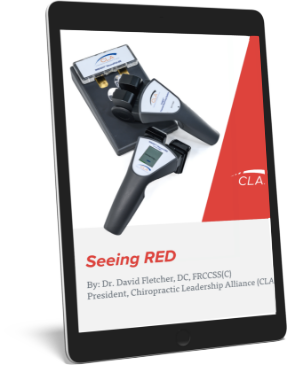By Dr. Christopher Kent
Conventional wisdom concerning the function of the human brain is being challenged by new research. As Kelso [1] observed, “Over the past few centuries, two conflicting theories of brain function have emerged. One sees the brain as a vast collection of distinct regions, each localizable in the cerebral cortex and each capable of performing a unique function. The other school of thought looks upon the brain not as a collection of specialized centers, but as a highly integrated organ. In this view, no single function can be the sole domain of any unique part of the cortex. Obeying the old dictum, the holistic brain is greater than the sum of its parts.”
These theoretical models are being challenged by a new theory, based upon the concept of oscillation and wave mechanics. Kelso [1] continued, “Neurons in different parts of the brain oscillate at different frequencies. These oscillations are bound together in a coherent network when people attend to a stimulus, perceive, think and act. This is a dynamic, self-assembling process, parts of the brain engaging and disengaging in time…In the simplest case, oscillations in different brain regions can rise and fall together, locking in ‘in-phase’ brain activities, or the pattern can be ‘anti-phase,’ in which one oscillatory brain activity reaches its peak as another hits its trough. In-phase and anti-phase are just two of many possible timing relations that can exist between specialized brain areas. This coordination mechanism allows a person to perceive different features of an object, different aspects of a moving scene, separate remembered parts of an experience or different ideas that arise in a conversation, binding them all together into a coherent whole.”
D.D. Palmer [2] expressed the relationship between “tone” and the dynamics of health and disease: “Life is an expression of tone. Tone is the normal degree of nerve tension. Tone is expressed in function by normal elasticity, strength, and excitability…the cause of disease is any variation in tone.” Clearly, Palmer understood that the tone, or oscillation, associated with biological systems is dependent upon the mechanical and functional integrity of the nerves.
Stephenson [3] addressed the concept of “cumulative constructive survival value” and “cumulative destructive survival matter,” metaphors for the phase relationships which had yet to be discovered by neurophysiologists.
What do these theoretical constructs have to do with chiropractic? Perhaps everything. It has been suggested that chiropractic care affects brain function. Stephens and Gorman [4] proposed that “spinal derangement” may adversely affect cerebral function, as well as vision. Furthermore, chiropractic care has been associated with favorable changes in children with learning disorders and attention deficit hyperactivity disorder. [5-11]
Objective evidence of functional changes in the human brain following chiropractic adjustments includes EEG [12] and functional MRI [13] studies. These studies suggest improved “neural efficiency.”
As scientists unravel the mysteries of the human brain, traditional chiropractic philosophy is vindicated. As chiropractors, we have the technology to turn theoretical constructs into clinical realities.
References
1. Kelso, JAS: “Design for living.” Editorial page, Sun-Sentinel, Wed. Jan. 2, 2002.
2. Palmer DD: “The Chiropractor’s Adjustor.” Portland, OR. Portland Publishing House. 1910.
3. Stephenson RW: Chiropractic Text-Book. Davenport, IA. The Palmer School of Chiropractic. 1927.
4. Stephens D, Gorman RF: “The association between visual incompetence and spinal derangement: an instructive case history.” J Manipulative Physiol Ther 1997;20:343.
5. Giesen J, Center D, Leach R: “An evaluation of chiropractic manipulation as a treatment for hyperactivity in children.” J Manipulative Physiol Ther 1989;12:353.
6. Phillips C: “Case study: the effect of using spinal manipulation and craniosacral therapy as the treatment approach for attention deficit hyperactivity disorder.” Proceedings of the National Conference on Chiropractic and Pediatrics 1991, p. 57.
7. Anderson C, Partridge J: “Seizures plus attention deficit hyperactivity disorder.” International Review of Chiropractic Jun 1993, p. 35.
8. Barnes T: “A multi-faceted approach to attention deficit hyperactivity disorder: a case report.” International Review of Chiropractic, Jan/Feb 1995, p. 41.
9. Barnes T: “Attention deficit hyperactivity disorder and the triad of health.” Journal of Clinical Chiropractic Pediatrics 1996;1(2):59.
10. Thomas M, Wood J: “Upper cervical adjustments may improve mental function.” Manual Medicine 1992;6(6):215.
11. Walton EV: “The effects of chiropractic treatment on students with learning and behavioral impairments due to neurological dysfunction.” International Review of Chiropractic 1975;29(4-5):24.
12. Hospers LA: “EEG and CEEG studies before and after upper cervical or SOT Category II adjustment and children after head trauma, in epilepsy, and in ‘hyperactivity.’” Proceedings of the National Conference on Chiropractic and Pediatrics 1992, p. 84.
13. Kent C, Vernon L: “Case Studies in Chiropractic MRI.” Arlington, VA. International Chiropractors Association. 1998. p. 23.

























































































































































